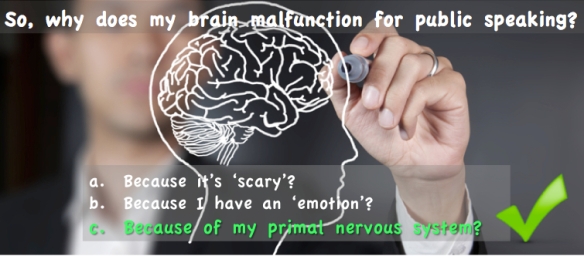Define Passive Communication
Passive communication is a term that you might have heard before. But what does it actually mean? Well, sit back and let’s break it down together!
In simple terms, passive communication refers to a style of communication where individuals tend to hold back their thoughts, feelings, and needs. They might avoid expressing themselves assertively, often sacrificing their own wants and desires to please others.
Imagine being at a friend’s party and not speaking up when you really want to leave. You might end up staying longer than you’d like, simply because you’re too afraid to say something. That’s a classic example of passive communication.
But don’t worry, there are ways to improve your communication skills and be more assertive. So, let’s dive in and learn about the different communication styles and how passive communication can affect our relationships. Are you ready? Let’s get started!

Understanding Passive Communication: A Guide to Effective Communication Styles
Passive communication is a term used to describe a particular communication style where individuals tend to avoid expressing their opinions, needs, and desires openly. It often involves the inhibition of emotions and a reluctance to assert oneself in order to avoid conflict or confrontation. In this article, we will delve deep into the concept of passive communication, explore its characteristics, and discuss strategies to overcome its limitations.
Characteristics of Passive Communication
Passive communicators tend to avoid confrontation and struggle with expressing their needs and desires openly. They often prioritize the feelings and opinions of others, which may lead to a disregard for their own needs. Here are a few key characteristics of passive communication:
1. Lack of Assertiveness: Passive communicators struggle to assert their own opinions, making it difficult for them to voice their needs and desires.
2. Difficulty in Saying No: Passive individuals have a hard time saying “no” to others, often prioritizing the needs and wants of others over their own.
3. Submissive Behavior: Passive communicators exhibit submissive behavior, often allowing others to dominate conversations and decision-making processes.
4. Fear of Conflict: Conflict avoidance is a characteristic often seen in passive communication. This can lead to a buildup of resentment and dissatisfaction as individual needs are not being met.
5. Indirect Communication: Passive communicators tend to express their thoughts indirectly, often relying on non-verbal cues and passive-aggressive behavior to convey their message.
Passive communication can have detrimental effects on relationships, leading to misunderstandings, unfulfilled needs, and a lack of personal growth. However, understanding the characteristics of passive communication is the first step in overcoming its limitations.
The Impact of Passive Communication
Passive communication can have various impacts on both professional and personal relationships. Here are a few common consequences:
1. Lack of Boundary Setting: Passive communicators often struggle with setting boundaries, leading to feelings of being taken advantage of and a lack of autonomy.
2. Resentment and Frustration: When needs and desires are consistently suppressed, passive individuals may experience resentment and frustration towards others, impacting their overall well-being.
3. Decreased Self-Esteem: A lack of assertiveness can lead to a decrease in self-esteem and confidence, as individuals do not feel empowered to express themselves.
4. Ineffective Problem Solving: Passive communication hinders effective problem-solving, as open and honest dialogue is essential for finding resolutions that satisfy all parties involved.
5. Miscommunication and Misunderstandings: By relying on indirect communication, passive individuals often leave room for misinterpretations and misunderstandings, leading to further confusion and conflict.
It is important to recognize the negative effects of passive communication and work towards developing more assertive and effective communication styles that promote healthy relationships and personal growth.
Tips for Overcoming Passive Communication
Overcoming passive communication requires a shift in mindset and the development of new communication strategies. Here are some practical tips for individuals looking to overcome passive communication:
1. Self-Awareness: Develop self-awareness by recognizing the signs of passive communication and reflecting on its impact on your life and relationships.
2. Assertiveness Training: Consider enrolling in assertiveness training programs or workshops to learn and practice assertive communication techniques.
3. Practice Active Listening: Active listening involves not only hearing what others say but also understanding their perspective. Engage in active listening to build stronger connections and facilitate open dialogue.
4. Set Boundaries: Understand your own limits and communicate your boundaries to others. This will help establish mutual respect and ensure your needs are considered.
5. Use “I” Statements: Instead of using accusatory or judgmental language, use “I” statements to express your thoughts and feelings. For example, say “I feel” instead of “You always” to express your emotions without blaming others.
6. Seek Feedback: Ask for feedback from trusted individuals to gain insight into your communication style. Use their feedback to make positive changes and further improve your communication skills.
7. Practice Self-Care: Prioritize self-care to enhance your overall well-being. When you take care of yourself, you are more likely to communicate effectively and assertively.
By implementing these tips, individuals can begin to transform their passive communication style into a more assertive and effective approach, leading to healthier and more fulfilling relationships.
The Importance of Effective Communication Skills
Effective Communication: The Key to Success in Relationships and Professional Life
Effective communication skills are crucial for success in all aspects of life, whether it be personal relationships, professional interactions, or navigating social situations. The ability to express oneself clearly, listen actively, and adapt communication style to different contexts is essential for fostering meaningful connections, resolving conflicts, and achieving desired outcomes.
The Benefits of Effective Communication
Effective communication skills offer numerous benefits in both personal and professional settings. Here are some of the key advantages:
1. Building Stronger Relationships: Effective communication fosters understanding, trust, and connection, leading to stronger and more fulfilling relationships with loved ones, friends, and colleagues.
2. Resolving Conflicts: Clear and open communication allows for conflicts to be addressed and resolved constructively, leading to healthier and more harmonious relationships.
3. Enhanced Productivity: In professional settings, effective communication leads to improved collaboration, efficient decision-making, and increased productivity within teams and organizations.
4. Empathy and Understanding: Effective communication involves active listening and empathy, allowing individuals to understand others’ perspectives, experiences, and emotions, facilitating better connection and rapport.
5. Career Advancement: Good communication skills are highly valued in the workplace, contributing to career advancement opportunities and professional growth.
Tips for Improving Communication Skills
Whether you are looking to enhance your personal relationships or boost your professional success, improving your communication skills is a valuable endeavor. Here are some practical tips to help you improve your communication skills:
1. Active Listening: Become an active listener by giving your full attention and demonstrating genuine interest in what others have to say. Avoid interrupting and provide feedback to show that you are engaged in the conversation.
2. Clarify and Confirm: To avoid miscommunication, ask questions for clarification and summarize what has been said to ensure that you have understood correctly.
3. Non-Verbal Communication: Pay attention to non-verbal cues such as body language and facial expressions while communicating. These cues can provide valuable insights into the emotions and intentions of the speaker.
4. Practice Empathy: Put yourself in others’ shoes and try to understand their perspective. Show empathy and validate their feelings and experiences to create a safe and supportive environment for communication.
5. Use Clear and Concise Language: Express your thoughts and ideas using clear and concise language. Avoid jargon and complex terms that may lead to confusion.
6. Adapt to Different Communication Styles: Understand that individuals may have different communication styles and adapt your approach to ensure effective communication. Flexibility is key in maintaining productive conversations.
7. Seek Feedback: Ask for feedback from others to gain insight into your communication style and areas for improvement. Actively seek opportunities to refine and enhance your skills.
By incorporating these tips into your daily interactions, you can improve your communication skills and experience the vast benefits that effective communication brings.
Avoiding Passive Communication Pitfalls in Virtual Communication
The Challenges of Passive Communication in a Virtual Setting
The prevalence of virtual communication, especially in the age of remote work and online meetings, has brought new challenges for effective communication. Passive communication tendencies can become even more pronounced in virtual settings, as individuals may feel inhibited by the absence of non-verbal cues and face-to-face interactions. Understanding and addressing these challenges is crucial for maintaining clear and productive communication in the virtual world.
Strategies for Overcoming Passive Communication in Virtual Settings
To navigate the challenges of passive communication in virtual settings, it is important to employ strategies that promote active and effective communication. Here are some useful tactics:
1. Video Conferencing: Whenever possible, opt for video conferencing instead of solely relying on audio calls. Seeing facial expressions and body language helps enhance overall communication and reduces the likelihood of miscommunication.
2. Engage in Chat Platforms: Utilize chat platforms within virtual meetings to encourage active participation and give individuals the opportunity to express themselves more comfortably.
3. Be Mindful of Speaking Time: In virtual meetings, it can be challenging for everyone to have an equal opportunity to speak. Be mindful of the time you take and actively encourage others to share their thoughts and ideas.
4. Use Visual Aids: Incorporate visual aids, such as slides or shared documents, to enhance understanding and ensure that information is communicated effectively.
5. Pay Attention to Tone: Without the presence of non-verbal cues, misinterpretation of tone can easily occur in virtual communication. Be mindful of your tone, choosing your words carefully to reflect your intended message accurately.
6. Encourage Open Dialogue: Create an inclusive environment where everyone feels comfortable expressing their thoughts and ideas. Encourage open dialogue and active participation from all participants.
7. Practice Active Listening: Engage in active listening during virtual communication by giving your full attention to the speaker and avoiding distractions. Summarize and reflect on what has been said to ensure a shared understanding.
By implementing these strategies, individuals can overcome the limitations of passive communication in virtual settings and foster effective and productive communication, regardless of the distance.
Conclusion
In this article, we have explored the concept of passive communication, its characteristics, and the impact it can have on relationships and personal growth. We have also discussed strategies for overcoming passive communication and highlighted the importance of effective communication skills in various aspects of life. Additionally, we have addressed the challenges of passive communication in virtual settings and provided strategies for navigating virtual communication effectively. By applying these insights and tips, individuals can develop more assertive and mindful communication styles, leading to happier, healthier, and more fulfilling relationships both online and offline.
Key Takeaways – Define Passive Communication
- Passive communication is a style of communication where individuals avoid expressing their thoughts and feelings.
- Passive communicators tend to avoid conflicts and prioritize others’ needs over their own.
- Passive communication can lead to misunderstandings and unmet needs.
- Passive communicators often struggle to assert themselves and may feel ignored or taken advantage of.
- Developing assertiveness skills can help individuals shift from passive communication to more effective communication styles.
Frequently Asked Questions
In this section, we have answered some commonly asked questions about passive communication.
What is passive communication?
Passive communication refers to a communication style where an individual tends to avoid expressing their thoughts, needs, or opinions openly. It involves having difficulty asserting oneself and often results in allowing others to make decisions or express their views without actively participating in the conversation.
Passive communicators may have a fear of confrontation or rejection, which leads them to remain silent even if they have something important to communicate. This communication style can prevent individuals from having their needs met and can lead to misunderstandings or resentment in relationships.
How can you identify passive communication?
Passive communication can be recognized through various signs and behavioral patterns. Some common indicators of passive communication include avoiding eye contact, speaking softly or hesitantly, frequently apologizing, and the inability to express personal opinions or needs.
Additionally, passive communicators often have difficulty saying “no” and find it challenging to ask for what they want. They may also struggle with setting boundaries, asserting themselves in conflicts, and often feel unheard or overlooked in conversations.
What are the potential drawbacks of passive communication?
Passive communication can have several disadvantages. When individuals consistently use passive communication, it can lead to diminished self-esteem and feelings of powerlessness. Additionally, passive communicators may often feel ignored, frustrated, or unfulfilled in their relationships.
Moreover, passive communication can create misunderstanding and misinterpretation among others, as their true thoughts, needs, and opinions are not openly expressed. It can result in others making assumptions about their desires or intentions, leading to strained relationships and unmet expectations.
Can passive communication be changed?
Yes, passive communication can be changed through self-awareness and practice. Developing assertiveness skills is essential in transforming a passive communication style. It involves expressing thoughts and feelings honestly, setting boundaries, and asserting oneself respectfully in different situations.
Changing passive communication also requires building self-confidence and self-esteem, as these qualities empower individuals to communicate their needs and opinions effectively. Seeking professional help through therapy or assertiveness training programs can also be beneficial in overcoming passive communication habits.
What are some effective strategies for improving passive communication?
To improve passive communication, it is helpful to practice assertiveness skills, such as using “I” statements to express thoughts and feelings clearly. Additionally, setting boundaries and practicing self-care can contribute to a healthier communication style.
Building self-confidence through positive affirmations, addressing underlying fears or insecurities, and seeking support from loved ones or professionals can also aid in improving passive communication. Becoming an active listener and practicing active participation in conversations can further enhance communication skills and promote more open and effective communication.
What is Passive Communication Style Are You a Passive Communicator
Summary
Passive communication is when someone avoids expressing their opinions or needs to others. Instead of speaking up, they stay quiet and go along with what others want. This can lead to misunderstandings and resentment, as it often prevents open and honest communication.
People who use passive communication may struggle to assert themselves or fear confrontation. They often prioritize keeping the peace over expressing their own thoughts and feelings. Passive communication can make it difficult for others to understand what they truly want or need.
To avoid passive communication, it is important to practice assertiveness. This means expressing yourself in a respectful and clear manner, while also listening to others. It is essential to communicate openly and honestly to foster healthy relationships and ensure that your needs are met.



